Driving Is a Privilege, Not a Right!

A driver should learn all of the laws that pertain to obtaining and keeping a driver’s license. Driving has been viewed by the state to be a privilege, granted and revocable at any time. It is a common misconception that driving in California is your “right.” In reality, it is a privilege to drive in this state. The Department of Motor Vehicles has been empowered to oversee all licensing of motor vehicles. They control applications, suspensions, revocations, and probations of licenses. You must have a driver’s license issued by the California Department of Motor Vehicles to drive on any public road, street, highway or property, and the license must be correct for the class of vehicle driven.
The following are some of the more applicable laws:
A. New residents of California have 10 days after establishing permanent residency to apply for a driver’s license. A person must relinquish his or her current out-of-state driver’s license prior to receiving a California license. You can establish residency by doing any of the following:
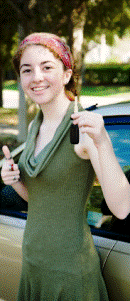
- voting in a California election
- paying resident tuition at a public institution of higher education
- filing for a homeowner’s property tax exemption
- obtaining any state license
- or any other privilege or benefit not ordinarily extended to nonresidents
B. A driver’s license typically expires five years from the date of issue on the driver’s birthday.
C. The Department of Motor Vehicles must be notified within 10 days of a change in a driver’s address.
D. A “Class A” license allows a driver to operate any type of vehicle or legal combination of vehicles listed under “B” and “C.”
- You may tow any single vehicle with a Gross Vehicle Weight Rating (GVWR) of more than 10,000 pounds.
- You may tow any trailer bus, with an endorsement.
- You may tow more than one vehicle with an endorsement.
- A “Class A Noncommercial” license allows the holder to operate any vehicle listed under Class C. However, if you do so for hire, you have to get a medical card.
- You may tow travel trailers with a GVWR over 10,000 pounds.
- You may tow a fifth-wheel travel trailer with a GVWR over 15,000 pounds when the trailer is not used for hire or pay.
- A “Class A Fire Fighter” license allows the holder to operate only Class A and Class B defined combination fire fighting vehicles, and all vehicles listed under Class C.
E. A “Class B” License allows a driver to operate:
- any single vehicle with a GVWR of more than 26,000 pounds
- a three-axle vehicle with a gross weight over 6,000 pounds
- any bus, except a trailer bus (with an endorsement)
- any farm labor vehicle (with an endorsement)
- all vehicles listed under Class C.
- you may tow a single vehicle with a GVWR of 10,000 pounds or less.
1. A “Class B Noncommercial” license allows the holder to operate any vehicle listed under Class C.
- The holder may also operate a house car over 40 feet but not over 45 feet with an endorsement.
- You may tow any vehicle listed under Class C.
2. A “Class B Fire Fighter” license allows the holder to operate only a Class B defined single fire fighting vehicle, and all vehicles listed under Class C.
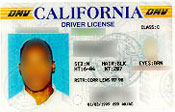
F. A “Class C” license is issued to any driver who wishes to operate a basic automobile. The holder of a “Class C” license can operate:
- any two-axle vehicle with a GVWR of 26,000 pounds or less.
- any three-axle vehicle with a gross vehicle weight less than 6,000 pounds.
- any house car 40′ or less.
- a vanpool vehicle, made to carry more than 10 but less than 15 passengers including the driver.
With a “Class C” license you may tow:
- a single vehicle with a GVWR of 10,000 pounds or less.
- a boat trailer provided the gross combination weight rating does not exceed 26,000 pounds, and an oversize permit is not needed.
With a vehicle that weighs at least 4,000 pounds, you may tow a:
- fifth-wheel travel trailer or trailer coach with a GVWR under 9,000 pounds.
- fifth-wheel travel trailer between 10,000 and 15,000 pounds with an endorsement.
With a “Class C” license you may not tow more than one vehicle.
G. A “Class M1” license entitles the operator to ride any two-wheeled motorcycle or any motor-driven cycle, and a “Class M2” license, any motorized bicycle or moped. “Class M” licenses vary according to the power of the motorcycle’s engine, measured by its cubic centimeters. “Class M” licenses are considered endorsements, which require the driver to have a “Class C” license as well. Driver’s under the age of 21 must complete a Motorcycle Safety Course and hold a permit for six months before they can be issued a class M license.
H. A driver must be 16 years old to receive a permanent driver’s license.
Instruction Permit
The minimum age for issuance of an instruction permit is 15 years, 6 months.
The Department of Motor Vehicles may issue an instruction permit to any physically and mentally qualified person who meets the following requirements:
- The applicant is age 15 years and 6 months or older;
- has successfully completed an approved course in automobile driver education;
- is taking driver training or is enrolled and participating in an integrated driver education program
Applying For a California Driver License
When applying for a California Driver License, you will need to show acceptable proof of date of birth, true full name, and social security number. You will also have to sign a declaration that acknowledges that you understand you may be charged with murder if someone dies because you were driving under the influence. (When you renew, you will also be required to sign this declaration.) During the application process you will have your thumbprint and picture taken. All documents used for proof of birth date or name must be originals or certified copies of the original and contain an impressed seal or an original stamped impression. A copy of a certified copy will not be accepted by the DMV. The following is a list of documents that the DMV will accept as proof of birth date or legal presence:

- U.S. Birth Certificate
- U.S. Certificate or Report of Birth Abroad
- Proof of Indian Blood Degree
- U.S. Passport
- U.S. Armed Forces ID Card
- Certificate of Naturalization
- Certificate of Citizenship
- Resident Alien Card
- Foreign Passport
- Mexican Border Passing Card with valid I-94
Your social security number will be checked and verified with the U.S. Social Security Administration. Your license will not be issued until your identity has been verified, you have paid all the applicable fees, passed a written test, driving test and vision screening, you have shown that your physical and mental capabilities allow you to operate a motor vehicle safely, and you have no outstanding actions on your driving record. You can apply for a California Driver License at most Department of Motor Vehicles offices.
Interstate commercial motor vehicle drivers are required to undergo a medical examination by a certified medical examiner listed on the National Registry beginning May 21, 2014. Chiropractors listed on the current National Registry of Certified Medical Examiners may perform this exam for CDL holders when applying for or renewing special certificates for school busses, school pupil activity busses, youth busses, general public paratransit vehicles or farm labor vehicles.
The DMV may issue license tests to out of state commercial permit holders and electronically transfer the information to the motor vehicle department in the applicant’s home state.
The following people do not need a California license:
- Members of the Armed Forces or civilian employees of the U.S. Government who operate only government-owned vehicles on federal government business.
- Anybody who operates farming machinery or vehicles that are not normally operated on public highways.
- Anybody who operates legally registered off-highway vehicles or snowmobiles while going straight across a highway.
The Testing Process
In order to qualify for a California Driver License, you will need to pass three tests: a vision screening, a written exam, and a driving test.
The vision screening is required to judge whether you have good enough vision to operate a motor vehicle safely. If you require corrective lenses to pass the screening, you must wear them. Your driver’s license will reflect the fact that you need corrective lenses to drive. The DMV will not license applicants whose corrected vision is 20/200 or worse in the better eye. You may not use a bioptic telescopic or similar lens to meet the standards.
The next test you will need to pass is a written or audio traffic laws test. This exam will test your knowledge of California traffic laws, road signs, defensive driving techniques, and driving safety rules. The test is available in many different languages. If your language is not available, you may take the exam with the help of an interpreter. This test will find out if you know how to legally drive a motor vehicle.
The final test you will be given is a driving test. You may only take the driving test after you have passed the vision screening and knowledge test. The driving test is usually only given on an appointment only basis. You will need to bring the following items to your driving test:
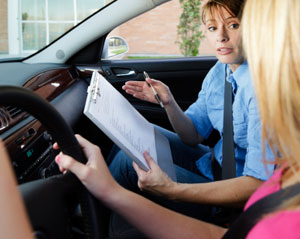
- Your instruction permit, or your old license if you are renewing it.
- A licensed driver.
- A properly licensed, registered, insured, and safe vehicle.
- The examiner will check to make sure the vehicle has properly working brake lights, horn, parking brake, and signals.
- He or she will also check to see that the tires are not bald. The vehicle driver’s side window must roll down, there must be two rear-view mirrors, and the windshield must be clean and unobstructed.
- The examiner will then ask you to locate the following switches: headlights, windshield wipers, defroster, and emergency flashers.
- You will need to wear your seatbelt during the entire test.
- If the vehicle does not meet the above criteria, the driving test will be postponed.
During the driving test itself, you and the examiner will be the only people in the vehicle. No animals will be allowed in the vehicle either. The examiner will ask you to do certain things. He or she will not ask you to do anything illegal or try to trick you. During the test, the examiner will be checking the following:
- Starting your vehicle, signaling when leaving the curb, using your mirrors, and turning your head.
- Control of your vehicle, using the gas and brake pedal, using two hands on the steering wheel.
- Driving in traffic, using the proper lanes, proper signaling distance, proper following distance.
- Obeying traffic signals and posted signs.
- Yielding and taking the right-of-way.
- Proper stopping — smooth stops and emergency quick stops.
- Proper backing procedures.
- Interacting with other traffic, pedestrians, bicyclists, and other road users.
- Paying full attention to the task of driving.
After the test has concluded, the examiner will give you a score sheet and discuss with you what you did wrong. If you pass, you will be issued an interim license valid for 60 days.
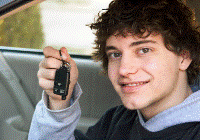
Nine percent of all drivers involved in fatal crashes and 12 percent of all drivers involved in police-reported crashes were young drivers. However, young drivers were only 5.5 percent of all licensed drivers. 1 Call it coincidence or a direct result of these facts, but all driver license applicants under the age of 18 face some tough license restrictions.
- *For the first twelve months a teen holds a license, he or she cannot transport other teenagers under 20 years old, unless accompanied by an adult (licensed driver 25 or older).
- *For the first twelve months, a teen may not drive between 11 p.m. and 5 a.m., unless accompanied by an adult.
It is illegal to use a driver’s license in the following ways:
- To permit another person to use your license.
- To refuse to turn in the license after the DMV requests it.
- To use a copy of your license.
- To display any cancelled, suspended, illegally obtained, or altered license.
A person may be denied a California Driver License for many reasons including:
- If you are not 16 years old.
- If you do not pass both the written and driving tests.
- If you have a history of alcohol or drug abuse.
- If you have a medical disorder where you are prone to lapses of consciousness.
- If you illegally used a license in the past.
- If you falsify or lie about any information on the application.
- If your record reflects a failure to appear or pay for a traffic citation.
- If you are unable to understand signals, signs or shapes.
- If you have a poor driving record with the DMV.
Fines and Penalties
As discussed earlier, the Department of Motor Vehicles has developed a way of treating the negligent operator of a vehicle by attaching penalties to his or her continued negligent driving. The Negligent Operator Treatment System (NOTS) contains penalties that are imposed on drivers after abuse of their driving privilege takes place. Some penalties include:
A. Any person cited for driving with a suspended or revoked license faces permanent license revocation, fines, vehicle impoundment and jail time.
B. Reasons a driver would be subject to a DMV re-examination or hearing would include a driver giving false information on a driver’s license application, or if the driver commits a driving violation such as driving under the influence of alcohol or other drugs.
C. Notification of license revocation or non-renewal.
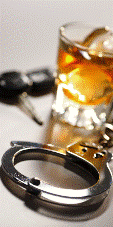
- When the DMV deems it proper, a driver can be notified in writing of the impending termination of his or her driving privilege. The notice shall include a definition and explanation of the action to be taken, under what grounds such action is warranted, and notification of the driver’s right to a hearing (when appropriate, the driving privilege can be suspended upon 30 days written notice.)
- Excessive speeding or driving seen as reckless by a police officer can result in a driver’s license being suspended for a period not exceeding 30 days on first conviction, and a period not exceeding six months on third or additional convictions (California Vehicle Code 13200).
- A driver accused, convicted, or arrested for possession of narcotics or a controlled substance on his or her person is subject to driver’s license suspension or revocation (California Vehicle Code 13202).
- Specific misdemeanors and/or drug usage is cause for driver’s license suspension or revocation (California Vehicle Code 13201).
- In criminal proceedings where the defendant is charged, the court may use its discretion in recommending a trial or that an investigation be conducted to determine whether the driving privileges of that person shall be suspended or revoked.
Types of Offenses in California include:

- Infraction – Most moving violations (such as U-Turn violations or speeding violations) are infractions. There is a fine, but no jail time is associated with an infraction. Therefore, the driver has no right to a public defender or jury trial.
- Misdemeanor – Misdemeanors are more severe than a typical moving violation (reckless driving and evading arrest are some examples.) The driver is subject to a fine, jail time for up to one year for a particular violation and may have a jury trial and utilize a public defender if he or she cannot afford his or her own legal counsel.
- Felony – A DUI is an example of a driving-related offense that might become a felony. Penalties for felony offenses are imposed by a court of law, not the DMV. The driver is subject to fines and, in some cases, state prison.
Remember that the Department of Motor Vehicles has developed a way of treating the negligent operator of a vehicle by attaching penalties to his or her continued negligent driving. The Negligent Operator Treatment System (NOTS) contains penalties that are imposed on drivers after abuse of their driving privilege takes place.
Specific Offenses
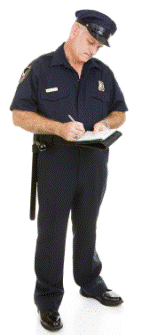
Below are some offenses that will result in penalties beyond a license suspension or revocation.
Racing – Law enforcement will seize for 30 days the cars of drivers who participate in speed contests, reckless driving, or display an exhibition of speed, including burning rubber or making turns at a high speed. Drivers convicted for their involvement in speed contests will be required to pay a fine up to $1,000. If their driver’s license is suspended as a result, they will have to provide proof of financial responsibility to reinstate their driving privileges.
Evading a Police Officer – Conviction for evasion of a police officer will lead to a jail term between 6 months and one year. However, you will face longer prison terms if any injuries or deaths occur as a result. Causing bodily injury to someone else while evading law enforcement will result in imprisonment for 3, 5 or 7 years. If someone dies as a result, you will face 4, 6 or 10 years in prison.
Vehicle Requirements for Operation on the Road
Lights and Horns
A. Lights – It is said that the eyes are a human being’s window to the world. Similarly, the lights on a vehicle are its eyes and are essential to the safe operation of a motor vehicle. For this reason, lights are required to work properly. The following additional laws and requirements should be acknowledged:
- The law requires that you turn on your headlights 30 minutes after sunset and leave them on until 30 minutes before sunrise. Additionally, headlights must be used anytime one cannot see at least 1000 feet ahead. Headlights must also be used when driving in conditions that require the continuous use of windshield wipers, such as when it rains.
- Headlights must be on low beam when within 500 feet of an approaching vehicle or 300 feet of the vehicle you are immediately following.
- High beams may be used only when there is no direct negative impact on any other drivers.
- All motorcycles must be equipped with one or two headlights. Any motorcycle manufactured and first registered on or after January 1, 1978 must have headlights that activate automatically and operate whenever the engine is running.
- Taillights need to be maintained, as they are warning mechanisms for vehicles to the rear.
- Emergency hazards or flashers should only be utilized in distress situations to alert other drivers of a problem. These lights are the same used as brake lights, and a switch or button inside the car activates them. When activated, they flash at a regular interval until turned off. These flashing red lights should warn other drivers that you have a problem and imply that they should use extra caution around you.
- Headlights should be used when it is cloudy, raining, snowing, foggy or when windows may be icy, making it difficult to see other cars.
- Headlights should be used during the daytime when driving on mountain roads, country roads, through canyons or tunnels, or any time you have difficulty seeing.
- It is illegal to drive with only your parking lights lighted except when the lamps are being used as turn signals or when the headlights are lighted too.
- Single beam headlights are permitted only on motor vehicles manufactured and sold prior to September 19, 1940.
- Fog lamps are to be used along with headlights, not in their place. A vehicle may have no more than two fog lamps on the front and two red fog taillights on the rear. Fog lamps mounted on the front must be at a height of not less than 12 inches nor more than 30 inches. Fog tail lamps must be mounted not lower than 12 inches nor higher than 60 inches.
- No more than two secondary or auxiliary driving lamps may be placed on the front of a vehicle at a height of not less than 16 inches nor more than 42 inches. Driving lamps are lamps designed for supplementing the upper beam from headlamps and may not be lighted with the lower beam.
- Any motor vehicle may be equipped with no more than two auxiliary passing lamps mounted on the front at a height of not less than 24 inches nor more than 42 inches. Passing lamps are lamps designed for supplementing the lower beam from headlamps and may also be lighted with the upper beam.
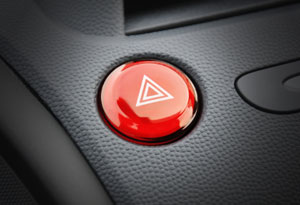
Watch this video for a review of when to use your headlights.
B. Horns – As a warning mechanism, there is nothing more effective in your vehicle. The horn should be used to warn other drivers of a potential collision or other emergency. Unfortunately, use of the horn has become a spark plug for road rage situations. Use of the horn, however, should not be feared, but used as a means to save lives.

- The horn should be used at any time it is necessary to avoid a crash.
- If the roadway doesn’t permit the vehicle to travel completely to the right side of the lane when approaching a curve with an unobstructed view of less than 200 feet, the driver must give audible warning to other drivers with the horn.
- A horn should not be used to attract the attention of other drivers unless necessary to avoid collisions or for the safe operation of your vehicle.
- When driving on a mountain road where visibility is impaired and the driver cannot see at least 200 feet ahead, the vehicle’s horn should be sounded as a warning to other drivers. As a rule, the horn should only be utilized in emergency or distress situations and must be in good working order and capable of emitting sound that is audible from a distance of at least 200 feet.
NOTE: The California Vehicle Code specifies that the only use for your horn other than as a warning device is as a theft alarm system. Car alarms may not sound for more than 20 minutes if the car is parked near a residence, business or school. The vehicle may be impounded if the car alarm is not turned off.
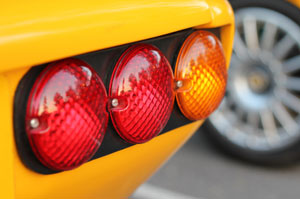
C. Brake Lights – Brake lights must be functional and properly maintained as they are an essential part of safe driving. The vehicle(s) immediately following a car needs to have ample warning of an impending stop in order to adequately slow their vehicle. Missing or inoperable brake lights often lead to rear-end collisions as the vehicles behind are unaware that the vehicle ahead is slowing. Tailgating is a major problem on the roads today, and inoperable brake lights only add to the danger. It is nearly impossible to judge whether a vehicle is slowing without warning lights. A simple periodic check of the vehicle’s brake lights will prevent this problem from occurring. NOTE: Reverse or back up lights should be maintained and properly working because they increase visibility for the driver and alert other motorists and pedestrians of your intention to back up. These lights are typically white when illuminated.
D. Signaling / Turn Signals – Always signal to let other drivers know of your intention to turn or change lanes. Watch for other drivers’ signals at all times. Turn signals are located next to the headlights on the front and next to the brake lights on the rear of the vehicle. Turn signals allow other drivers to see your intention to turn. To signal, simply move the lever (which is connected to the steering wheel) up for a right signal or down for a left signal. Some important tips to remember include:
- Signal before pulling toward or away from the curb.
- Signal before changing lanes.
- Always use arm signals in case other drivers cannot see your signal lamps (during daytime hours if it is very bright outside).
- Signal during the last 100 feet before turning, and on the freeway, it is best to signal at least five seconds before changing lanes.
- Signal to warn other drivers of a collision ahead.
- Use brake lights to signal your intention to stop or brake quickly.
This video provides more information on signaling and merging.
Emergency Vehicles
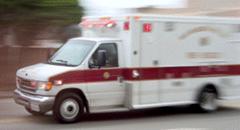
A. A driver must yield the right-of-way to all emergency vehicles, including police cars, ambulances, fire engines and any other vehicles using a siren and red light. When an emergency vehicle approaches, your vehicle should never stop in the middle of the intersection, but instead pull over to the right side of the road as soon as possible.
B. Emergency vehicles travel quite rapidly, often moving into opposing lanes of traffic, and they alert other vehicles with horns or speakers that they are approaching. Drivers should never follow within 300 feet of an emergency vehicle traveling in an emergency situation.
C. When passing a stopped emergency vehicle on a freeway, tow truck or marked Department of Transportation vehicle with its emergency lights activated, drivers must proceed with caution and change into a lane that is not adjacent to that vehicle, if practicable and legal. If it is not possible to change lanes safely, drivers must slow down to a safe speed that is reasonable and prudent for the conditions.
Emergency vehicles and emergency personnel who ride these vehicles exist for the safety of everyone. They need to be respected. Special Note…Stereo headphones or ear buds should not be worn while driving and can contribute to collisions. Drivers are unable to hear emergency vehicles around them and other vehicles. Driving with headphones on is illegal and quite dangerous.
Traffic Breaks
Traffic breaks are run by law enforcement to conduct emergency operations, slow or stop traffic to remove highway hazards, or prevent collisions in heavy traffic or dense fog. To run a traffic break, an officer will turn on his rear emergency lights, slow down, and drive back and forth across traffic lanes. You can assist the officer by
- Activating your own emergency flashers to warn drivers that there is a hazard ahead;
- Slowly decrease you speed to the same speed as the officer; and
- Not attempting to drive past the officer’s vehicle and not accelerating until the officer has turned off his emergency lights.
Speed Limits
Controlling your vehicle’s speed is the best way to prevent loss of control and collisions. Drivers need to be aware of legal and safe speeds at all times. Approximately 30 percent of all traffic fatalities in the United States are speed-related. The NHTSA estimates that the economic cost to society of speeding-related collisions was $52 billion.2 In 2014, speeding-related collisions were responsible for the loss of 9,262 lives in the United States.3
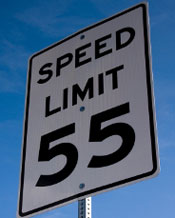
A. Residential District – The speed limit in a residential district is 25 mph unless otherwise posted. Narrow streets, vehicular congestion, and pedestrians all require a reduction in speed.
B. Business District – Unless posted, the speed limit in a business district is also 25 mph. The presence of high traffic flow and vehicles exiting and entering driveways, combined with pedestrian traffic, all require slower speeds.
C. School Zone – The speed limit in a school zone with children present is 25 mph. The presence of children at play or near streets calls for a dramatic reduction in vehicular speed. School zones have prominent street signs and markings calling for extreme caution and reduced speeds.
D. Blind Intersection – A blind intersection is where one cannot see for at least 100 feet in either direction during the last 100 feet before crossing. All blind intersections, except the ones controlled or protected by stop signs, yield right-of-way signs or official traffic control signals, have 15 mph speed limits.
E. Highways/Freeways – Maximum speeds on freeways are posted but are usually 65 mph. The recent change to 70 mph on some intra- and interstate highways will be posted where they apply. Two-lane, undivided highways have a maximum speed of 55 mph unless otherwise posted.
F. Railroad – The speed limit is 15 mph when one is within 100 feet of a railroad crossing and cannot see the tracks for at least 400 feet in both directions. This does not apply if a flagman is on duty or electrical or mechanical signal devices are present and clearly visible, if they do not signal the immediate approach of a train. NOTE: Special speed limits sometimes apply. Drivers should be aware that certain road conditions or factors will call for a reduction in speed often below posted limits.
G. Alleys – When driving down an alley, the speed limit is always 15 mph whether or not signs are posted or visible.
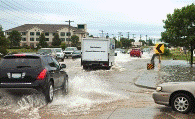
Don’t get caught speeding with the flow of traffic. Drive at your chosen speed – not someone else’s.
Basic Speed Law
A. The basic speed law demands that a driver never operate a motor vehicle at a speed that is unsafe for the road or too fast for conditions. This law requires that all drivers use discretion and common sense while driving and not drive at unsafe speeds. Driving 35 mph in a 35 mph zone during a severe rainstorm, for example, may be a violation of the basic speed law. A determination of a safe driving speed must be made by all drivers at all times, and not just awareness of the maximum speeds allowed by law. Underlying factors that may contribute to driving conditions must be factored in when assessing a safe speed. This law exists to slow down drivers in adverse conditions, not to allow drivers to exceed safe speeds.
B. Minimum speed laws are important to ensure safe traffic flow on roadways. If you block the normal and reasonable flow of traffic by driving too slowly, you may receive a ticket. More importantly, you may be a danger on the road to vehicles traveling at higher speeds and also risk the possibility of a rear-end collision. When driving at slow speeds, you should travel in the lane furthest to the right. Additionally, if vehicles approach and appear to want to pass, you should again signal and change lanes, proceeding to the right. Not only does awareness of safe driving procedures when traveling at slow speeds reduce the risk of a traffic collision, it also helps to avoid drivers possessed by road rage. NOTE: Always be aware of slow-moving vehicles you may be approaching.
C. Designated speed limits pertain to certain types of vehicles. The following vehicles shall never drive faster than 55 mph:
- A truck with three or more axles.
- A school bus transporting students.
- A tractor-trailer towing any other vehicle.
- A passenger vehicle or bus towing any other vehicle.
- A vehicle transporting explosives.
- A farm labor vehicle transporting any passengers.
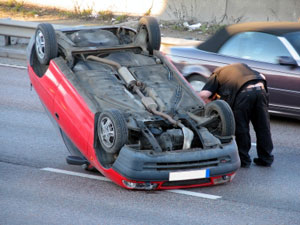
D. A Few Speeding Statistics
- In 2010, the NHTSA estimated that the economic cost to society of speeding-related collisions is $52 billion per year. 4
- Speeding-related collisions were responsible for the loss of 9,262 lives in the United States in 2014.
- In California, 991 people lost their lives due to speeding in 2014 which was only second to Texas (1,284) for the state with the highest number of speeding-related crashes.
- 87% of speeding-related fatal traffic crash in 2014 occurred on non-Interstate roads, such as local roads, minor arterials, and collector roads. Only 13% occurred on Interstate highways.
- Older drivers and female drivers across all age ranges were proportionally less likely to be involved in fatal crashes than young, male drivers. Male drivers between the ages of 15 to 20 had the highest rate of involvement in fatal speed-related crashes in 2014. 5
Watch this video for a review of speed limits.
Lanes of the Road
A. U-Turns
- A U-turn is turning your vehicle around in the street to go back the way you came. A U-turn is legal at all times in an intersection unless a “No U-turn” sign is posted. Additionally, a U-turn is legal in the middle of the block in a residential district if no other vehicle is approaching within 200 feet. A U-turn in the middle of the road is not legal in a business district “except…on a divided highway where an opening or break in a divider section has provided for one,” according to the California Vehicle Code Section 22102. Apartments, churches, hotels, multiple dwelling houses, clubs, and public building other than schools would designate an area a business district, as would an area where more than 50 percent of the dwellings are businesses (retail stores, office buildings, supermarkets, etc.).
- A U-turn is a dangerous maneuver that should be attempted only when proper consideration is given to vehicle positioning, turning radius, oncoming vehicles, and the width of the roadway. Oftentimes, a three-point turn or other turning action is preferable and more prudent than a U-turn.
Here’s a summary of when u-turns are legal and when they are illegal:
Legal U-Turns
A U-turn is turning your vehicle around in the street to go back the way you came. To make a U-turn, signal and use the far left lane or the center left turn lane. You may make a legal U-turn:
- Across a double yellow line when it is safe and legal.
- In a residential district:
- If there are no vehicles approaching you within 200 feet.
- Whenever a traffic sign, light, or signal protects you from approaching vehicles.
- At an intersection on a green light or green arrow, unless a “No U turn” sign is posted.
- On a divided highway, only if an opening is provided in the center divider.
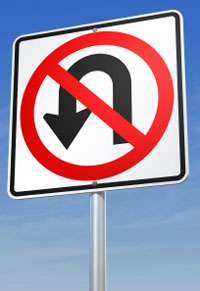
Illegal U-Turns
Never make a U-turn:
- At or on a railroad crossing.
- On a divided highway by crossing a dividing section, curb, strip of land, or two sets of double yellow lines.
- Where you cannot see clearly 200 feet in each direction because of a curve, hill, rain, fog, or other reason.
- Where a “No U-Turn” sign is posted.
- When other vehicles may hit you.
- On a one-way street.
- In front of a fire station. Never use a fire station driveway to turn your vehicle around.
- In business districts. Areas with churches, apartments, multiple dwelling houses, clubs, and public buildings (except schools) are also considered to be business districts. Turn only at an intersection, unless a sign prohibits it, or where openings are provided for turns.

One-Way Streets – In order to eliminate confusion in heavily traveled areas and to keep the flow of traffic moving, one-way streets are often used. These types of streets pose unique dangers to drivers, however. Wrong way drivers are common, as are other motorists making turns from unsafe lanes. You need to be aware of how to properly enter and exit one-way streets and be prepared to slow down dramatically if necessary. Always choose the safest lane.
B. Right Turns – Collisions commonly occur during right turns where a vehicle turns too wide and collides into an opposing vehicle making a left hand turn into its lane. Drivers in this right turn situation should complete their turn in the lane that is first accessible or the one furthest to the right. You may always turn right on a red light from a dead stop unless there is a sign prohibiting it, but you must complete the maneuver in the right or slow lane, keeping close to the curb at all times. If traffic is stopped at an intersection and you are several cars back, you may travel along the right curb in order to make a right turn, but only if it is safe to do so. If the space is set aside for parking or there is no pavement, you may not travel along the right. You may travel up to 200 feet in a bicycle lane in order to make a right turn, but you must yield to any bicycles using the lane. If you are in a lane that allows you to proceed with a right turn or proceed straight on the road, and the lane to your right is marked “right turn only,” you, as the driver in the left lane have the option to turn right on a red light. The driver in the “right turn only” lane, however, must proceed with the right turn after the lines dividing the lane on the left side change from broken to solid. Once the solid bold line appears, changing lanes out of the “right turn only” lane would be illegal, even if no other vehicles are present.
C. Left Turns
1. Left Turns – Left turns require extra caution as they tend to be dangerous due to conflict with oncoming vehicles traveling at high speeds, changing signals, and pedestrians utilizing the crosswalk. Limited visibility due to large vehicles, trucks or other obstructions also presents a hazard. You may make a left turn from one intersecting street to another intersecting street on a green light. The turn can be completed, if safe in either lane of the cross street. If a left turn is being made at the same time another vehicle is making a right turn onto the same street, the vehicle making the right turn has the right of way. You may make a left turn on a red light from a one-way street to another one-way street unless otherwise posted. When making a left turn against oncoming traffic, remember that you do not have the right of way, unless given the right of way by a green arrow that signifies unobstructed use of the road. No matter the situation, you should still proceed with caution.
2. Two-Way Left Turn Lane – This lane is located in the center of busy streets and painted with solid yellow outside lines and dashed yellow lines on the inside of the lane. According to Section 21460.5 of the California Vehicle Code, “drivers may not use the two-way left turn lane except when preparing for or making a left turn from or into a highway or when preparing for or making a U-turn, when such turn is permitted by law…when a two-way left turn lane is available, a left turn or U-turn shall not be made from any other lane.” You may proceed in this two-way left turn lane for a limited distance, not exceeding 200 feet. The law also states that a two-way left turn lane may not be used for passing, though it does not prohibit a vehicle from being driven across a two-way left turn lane.
Examples of right and left turns (The numbers on the cars refer to the numbered sentences below.)
1. Left turn from a two-way street.
Start the turn at the left hand edge of the lane closest to the middle of the street. You may complete the turn in either lane of the cross street, if it is safe to do so. You must use a left turn lane if there is one. A left turn from the next lane may be made if signs or arrows show it is okay.
2. Right turn.
The station wagon is turning correctly. It began the turn in the lane nearest the right-hand curb. It will end the turn in the lane nearest the right-hand curb. Do not swing wide into another lane of traffic. You may start a right turn from other than the far right lane only where pavement or overhead markings show that using that lane for a right turn is permitted.
3. Left turn from a two-way street into a one-way street.
Start the turn from the far left-hand portion of your side of the road. You may turn into any lane that is safely open, as shown above.
4. Left turn from a one-way street into a two-way street.
Start the turn from the far left-hand portion of your side of the road. The pickup truck may turn into either of the lanes that is safely open, as shown.
5. Left turn from a one-way street into a one-way street.
The turn must be started from the left-hand portion of the road. Watch for bicycle riders between your vehicle and the curb because they can legally use the left turn lane for left turns.
6. Right turn from a one-way street into a one-way street.
After starting your turn in the far right lane, you may use any lane open to traffic, if safe to do so. Sometimes signs or pavement markings will let you turn right from a lane next to the far right lane (shown by *).
7. Turn at a “T” intersection from a one-way into a two -way street.
Through traffic has the right of way. You may turn either right or left from the center lane. Watch for vehicles and bicycles inside your turn.
IMPORTANT STEPS IN MAKING A GOOD TURN:
- Never make a last-minute decision to turn. It is dangerous to not give enough notice to other drivers.
- Always scan the road ahead for hazards, pedestrians, bicycles, animals, etc.
- Look behind you and to both sides to be aware of where other vehicles are before you make a turn.
- Move into your lane as quickly as possible. Make sure you are completely in the proper lane at least a half-block before you turn.
- Signal your intention to turn at least 100 feet before making the turn. Click the signal, then keep both hands on the steering wheel throughout the entire turn.
- Slow down when approaching the turn, and release the brake and clutch during the turn.
- Remain in the proper lane, and maintain the same speed when beginning a turn until it is totally completed.
- Finish the turn in the proper lane. Then you can begin to look into changing into another lane.
D. Freeway / Highway / City Driving
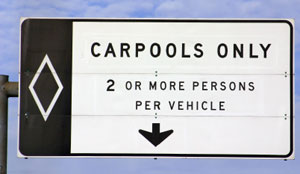
1. Freeway / Highway – The increased speeds required on highways does not necessarily mean an increased danger to the driver if certain precautions are taken and certain practices are followed. When driving on open highways, it is imperative to keep clear from and be aware of slow-moving vehicles. Early awareness of vehicles moving at substantially slower speeds than the flow of traffic can help one to avoid rear-end collisions or unsafe last-minute lane changes. Excessive lane changing or driving in slower lanes for prolonged periods of time can contribute to a last-minute encounter with a slow-moving vehicle. Special notes on freeway driving:
- Obey all timed signal entrance lights to assist with merging.
- Be aware of two freeway entrance lanes merging into one (double merge lanes.)
- Carpool on-ramp lanes will be marked with a diamond symbol and the words “Carpool Lane.” Signs posted at the onramp or along the freeway should be observed for usage requirements. You may not cross over double parallel solid lines to enter or exit any carpool lane except at designated entry or exit spaces. Carpool violations will result in a fine.
Note: Some low emission and hybrid vehicles (rated at 45 mpg or higher) were permitted to use the carpool lanes without the required number of passengers until July 1, 2011. Vehicles that are fully electric or use compressed natural gas may continue using the carpool lane until January 1, 2015. Plug-in hybrid vehicles will be allowed to use the carpool lane without the passenger restriction after January 1, 2012. The vehicle must display a special decal, issued by the DMV.
a. Control of Speed
(1) Never drive at an excessive speed where control of the vehicle is compromised. The vehicle should always be traveling at a speed that is prudent and feasible for conditions.
b. On-ramps / Merging
(1) Be advised that highway on-ramps are for entrance to freeways and should adequately prepare for freeway driving. Drivers should not travel at the slower speeds appropriate for city driving. Increase the vehicle speed to that of the highway traffic and use on-ramps and subsequent lanes as a means to merge into the flow of traffic at the current speed. When merging, watch vehicles ahead for sudden stops. Signal, increase speed, and merge safely into traffic, keeping the proper following distance at all times. Continue to signal until you have completely merged onto the freeway. Locate gaps in traffic to merge into and make sure not to merge too slowly or make sudden stops.
NOTE: If there is no acceleration lane, wait for a larger gap before entering and obey all yield and merge signs. Double merge lanes converge into one acceleration lane, and a timed entrance light usually helps to stagger the vehicles.
c. Exiting / Off-ramps
(1) Off-ramps are designed for slower speeds and are links to city roadways. As you enter the ramp, you should signal, reduce speed in a casual and deliberate manner, and prepare to stop, if necessary. Increases in speed should never happen on an off-ramp and is normally illegal. Exiting a highway requires reduced speed, extra caution, and heightened road awareness by the operator of the motor vehicle. Special notes on off-ramps: Exit lanes allow drivers to reduce speeds to the posted limit without affecting the freeway flow. Yield to others when necessary. If an exit is missed, simply exit the freeway at the closest off-ramp, re-enter the freeway to proceed in the opposite direction, and then go to your intended exit. No radical maneuvers should be attempted. Special care must be taken on a curved ramp — speed should be decreased as the ramps would not be safe for freeway speeds.
(2) Lane Changing / Turn Signals / Visibility Requirements – Excessive lane changing on highways is not advisable, because it increases the chances of mishaps or crashes. When changing lanes or preparing to exit a highway, it is best to use your mirrors and look over your shoulder to check the lane you want to enter. Lane changing and turning require you to signal and give warning to others on the road that an action is imminent. You must give warning in sufficient time to others sharing the roadway prior to initiating the maneuver. There must be adequate visibility in all directions prior to the lane change and an awareness of blind spots. Change lanes only one at a time. Avoid slowing down or stopping during a lane change as this could prove to be dangerous for other drivers behind.
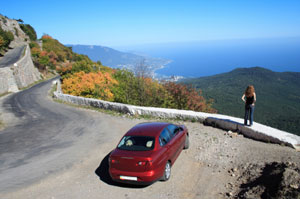
d. Slow-moving Vehicles
When driving on mountain roads or any road where your vehicle can impede other vehicles’ use of the highway, you should use the turn-out to allow other vehicles to pass. Drivers often fail to use common courtesy in this type of situation. Turn-outs are designed for use by drivers of slow-moving vehicles (including passenger vehicles) who, after recognizing their hazard or hindrance on certain roads, pull off and allow other vehicles to pass. Section 21656 of the California Vehicle Code states that a slow-moving vehicle, that is, one which is traveling at a rate of speed less than the normal flow of traffic at the particular time and place, on a two-lane highway where passing is unsafe because of traffic moving in the opposite direction must, when followed by five or more vehicles in a line, turn off the roadway at the nearest designated turnout or an area that can safely be used as a turnout. Road rage in drivers often results when others fail to demonstrate this type of common courtesy.
Special notes on freeway driving… If you subconsciously drive too fast, allow time to re-adjust to a lower speed without braking suddenly. Always be aware of the vehicle’s speedometer. If you encounter a tollbooth, slow down dramatically and prepare to stop. Avoid lane changing when you approach a tollbooth.
2. FREEWAY EMERGENCIES / PROBLEMS – Freeway emergencies can range from the unexpected appearance of an object in your lane to a collision. Whenever emergencies arise, which is quite often, you will basically have two options. You can stop before the incident or try to steer around it. If the object is small enough to drive over without hurting your vehicle, you should reduce your speed and go over it. If it is a danger to you or your vehicle, reduce your speed quickly, check your rear-view and side mirrors to find an open lane, then steer around the object, making sure to avoid getting into a collision with any other vehicles around you. If it is impossible to steer around the object, you will have to stop quickly. Make sure you first tap your brakes so that other drivers see your warning. Then apply your brakes, and make sure to leave as much space as possible between your vehicle and the object to decrease the possibility of being rear-ended. When you have come to a stop, turn your hazard lights on. NOTE: A vehicle that is stopped, parked or left standing on a freeway (even if disabled) for more than 4 hours may be removed.
3. TOLLBOOTHS – Tollbooths can be a danger to drivers on a freeway. They exist to collect fees for traveling on publicly owned roads. When you approach a tollbooth, first scan the road for speed limit signs. Speeds need to be decreased as you get closer to the booth. Make sure to follow the signs for designated vehicle lanes. Some special lane signs will include: “exact change,” “autos only,” “trucks only,” and other possibilities. Find your appropriate lane, and make sure your payment is ready before you reach the tollbooth. Be cautious of other vehicles in front of you and around you that stop or change lanes at the last minute.
4. CITY DRIVING – Driving in the city requires a reduction in speed since there is more traffic and road congestion to contend with. Certain precautions to take include:
- Choose the least congested lane.
- Watch out for detours and parked cars.
- Be aware of pedestrians and bicyclists.
- Look ahead for traffic hazards and signals.
According to a report from the NHTSA, in 2013 of the 32,719 traffic fatalities, 14,987 (46%) occurred in urban areas and 17,696 (54%) occurred in rural areas.6 All of this congestion is proving to be both time-consuming and costly! Residents in the Los Angeles and Orange County regions, for example, spent the equivalent of almost one-and-a-half weeks of their lives each year sitting in traffic. The cost of congestion—as measured in wasted time and fuel—is estimated at $13.3 billion per year, or $1,711 per commuter annually.7
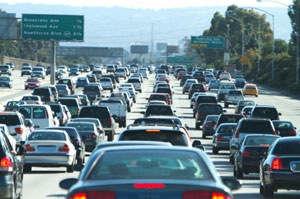
5. GRIDLOCK – In a recent study by the California Office of Traffic Safety, it was concluded that gridlock is one of California’s biggest traffic problems. The following are steps all drivers can take to help reduce this growing problem:
- Avoid rubbernecking — Rubbernecking involves slowing your vehicle down to look at extraordinary collisions or traffic situations. The slowing of your vehicle that enables you to stare at a traffic mishap may also contribute to gridlock or even an additional collision.
- Make less frequent lane changes — Drivers seem to think that changing from one lane to another is somehow increasing their chances of bypassing bumper-to-bumper traffic. Instead, it merely increases the problem by causing more braking and slowing of other vehicles.
- Don’t tailgate — Tailgating causes collisions. Collisions cause traffic bottlenecks, and traffic bottlenecks lead to gridlock. Always leave enough room between your vehicle and the vehicle you immediately follow.
- Keep your vehicle in good working order — Vehicle breakdowns block traffic flow and directly contribute to gridlock. A simple check of your vehicle’s operating condition prior to use can help avoid a potential breakdown.
- Do not block intersections or marked crosswalks — As required by the Anti-Gridlock Act of 1987, to ensure that your vehicle does not block traffic from either side, never enter an intersection or marked crosswalk unless there is enough space for your vehicle on the other side. This requirement is necessary even if you have a green light or other official traffic control signal indicating that you can proceed through the intersection or crosswalk (California Vehicle Code 22526). A major problem that causes gridlock is a driver’s unwillingness to grasp the concept of keeping intersections clear. Road markings that warn drivers to keep intersections clear should be observed, as they are a deterrence to gridlock.
VIOLATIONS OF THE GRIDLOCK LAW OFTEN CALL FOR SUBSTANTIAL FINES AND PENALTIES THAT VARY FROM CITY TO CITY.
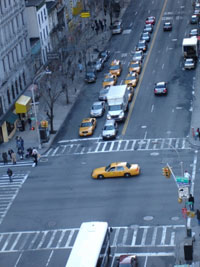
E. Intersections – An intersection is defined as the space between the four curbs of the side walk. When there is a signal, a vehicle may enter the intersection on a green or yellow light and proceed out of it, even if the light turns red after having entered the intersection. A gridlock situation may occur if you are entering an intersection on a green or yellow light but are unable to completely pass through the intersection after the light turns red, thus blocking traffic. Gridlock exists when a vehicle gets stuck in an intersection at a red light, preventing opposing traffic from use of the highway. Oftentimes, a gridlock violation is a parking ticket, not a moving violation. The first line distinguishing a cross-walk marks the beginning of the intersection. Some of the most important driving decisions, such as when to cross lanes, turn, or slow down, are all made at intersections, making them prime areas for potential collisions. A marked or controlled intersection will have a traffic signal or a stop or yield sign. Signals and stop and yield signs help determine the right-of-way for drivers and help make unprotected left turns safe. Right-of-way laws are some of the most basic and important traffic laws and we’ll discuss them shortly. At uncontrolled or unmarked intersections, drivers should slow down and prepare to stop. You must yield to traffic and pedestrians already in or just entering the intersection and you must yield to the vehicle that arrives at the intersection first. When two vehicles arrive at the intersection at the same time, the vehicle on the right has the right-of-way. At uncontrolled or unmarked “T” intersections, all traffic on the through road, including pedestrians, has the right-of-way.
1. Road or Intersection without Limit or Cross-walk Lines – In this situation, the driver should use the end of a curb as a determination of where the intersection starts and where the vehicle should stop. The end of the curb would mark the beginning of the intersection on the road where the crosswalk would exist in instances where lines may not be painted.
2. Caution should be exercised when approaching and proceeding through intersections. Conflicting highways, motor vehicles making left and right turns, and opposing signals all increase the crash potential at an intersection. Drivers jumping green lights can potentially conflict with drivers running red lights, leading to collisions. By law, a driver must signal his or her intention to turn when within 100 feet of the intersection. The speed or distance of other vehicles that may conflict with your vehicle should be determined, as well as the time required to complete the maneuver. Crossing an intersection completely takes an estimated four seconds.
3. Blind Intersections – An intersection is considered to be blind if there are no stop signs at any corner and you cannot see for 100 feet in either direction during the last 100 feet before crossing. A driver approaching a blind intersection should do so with extreme caution. The driver should reduce speed and yield the right of way whenever it is not safe or prudent for his or her vehicle to proceed through unobstructed. A blind intersection has limited visibility and requires the speed of the vehicle to be no more than 15 mph if no signs, signals, or other traffic controls are present. The reduced speed will allow for ample time to see conflicting cars and road hazards.
4. Lane Changing – Although not advisable, it is actually legal to change lanes in an intersection provided it is safe to do so. Causing another vehicle to change lanes in an intersection, however, would typically constitute an illegal or unsafe maneuver. Changing lanes in an intersection is not advisable and sometimes unsafe for several reasons. First, there may be a car waiting to make a left turn in front of you as you change lanes from the right to the left and its driver may already be creeping across your lane in anticipation of completing the turn when you and the car in front of you pass through the intersection. And secondly, if you change from the left to the right lane, there may a car about to make a right turn against the light into the right lane into which you’ve just changed and that driver may expect that lane to be clear as it was before you began your lane change.
5. Roads with Limit Lines – The driver shall stop behind a limit line at an intersection, or street controlled by a traffic light, and only proceed when the light changes. At a street or intersection with a stop sign, the driver shall stop behind the limit line, then proceed out into the intersection at a cautious speed to start a turn or other maneuver.
F. Crosswalks
1. A crosswalk is defined as any portion of a roadway at an intersection or elsewhere distinctly indicated for pedestrian crossing by lines or other markings on the surface. Crosswalks may be marked or unmarked and are located at the corner of each intersection, unless the intersection is marked with a single white limit line and posted with “NO PED XING.” Crosswalks require extra awareness and caution by the driver, as conflicts with pedestrians can lead to tragedy. At a typical intersection, there are usually four pedestrian crosswalks, unless it is otherwise marked with “NO PED XING” signs. At a “T” intersection, there are usually three crosswalks, unless otherwise marked. At all times, a car must yield to a pedestrian in either a marked or unmarked crosswalk. It is often thought that pedestrians always have the right-of-way, even if crossing illegally. But this is not so. Vehicle Code Section 21954 states that “at any point other than within a marked crosswalk or within an unmarked crosswalk at an intersection,” pedestrians “shall yield the right-of-way to all vehicles upon the roadway…”.
Be especially careful not to pass a car that is stopped at a crosswalk. A stopped car at a crosswalk is a good indication that there is a pedestrian crossing and your view of that pedestrian may be blocked by the stopped vehicle. Further, the vehicle may be stopped at the crosswalk in order to yield to another vehicle with the right of way at the intersection. By passing a vehicle stopped at a crosswalk, you may be taking the right of way from another vehicle moving into the intersection and, in doing so, cause a collision.
G. Lanes, Lines and Curb Markings
1. Double Yellows – Double yellow lines dividing a highway signify “no passing” and may only be crossed for a left turn maneuver. These lines are typically four inches in width and spaced three inches apart. They divide traffic in opposing directions, and in total measure only 11 inches wide.
2. Single Broken Yellow and White Lines – A single broken yellow line shows traffic flowing in two (opposing) directions, while a single broken white line signifies traffic flowing in two lanes in the same direction. The single broken line is most frequently seen on a two-lane rural roadway.
It is critical that you understand the meanings of different lane markings. The following video provides a review of traffic lanes and lane markings.
3. Curb Markings – The color of a curb dictates whether a driver may stop, stand, or park at the curb. You should be aware of the following:
| GREEN | You may only park there for a limited amount of time. The time is usually displayed on the curb or on a nearby sign. |
| WHITE | You are only allowed to stop at the curb to pick up or drop off passengers or mail. |
| YELLOW | You are only allowed to stay near the curb long enough to load or unload passengers or cargo. |
| RED | You may never stop at this curb. |
| BLUE | You may only park at this curb if you have a specially assigned placard or license designating you as disabled. |
4. Railroad Crossings – Preceding railroad crossings are railroad markings calling for a reduction in speed and extra caution. Stop signs, crossing gates, and flashers are all present.
H. Traffic Signs and Control Lights
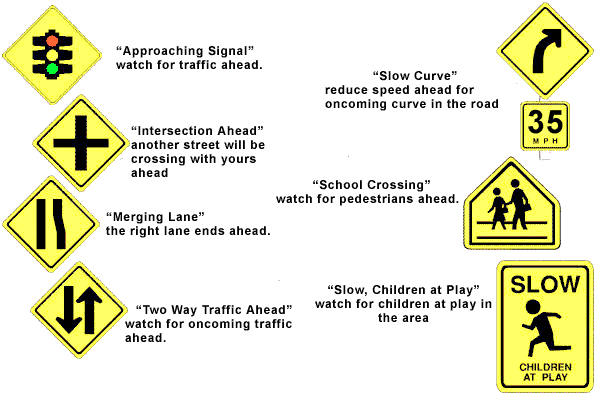
![]() 1. Yellow/Warning signs – These signs warn of an upcoming hazard or change in road conditions and do not refer to present conditions. They are yellow in color and diamond shaped. Yellow warning signs mean you should slow down and beware of extraordinary situations.
1. Yellow/Warning signs – These signs warn of an upcoming hazard or change in road conditions and do not refer to present conditions. They are yellow in color and diamond shaped. Yellow warning signs mean you should slow down and beware of extraordinary situations.
![]() 2. Stop signs – A stop sign requires that the driver make a full stop prior to entering a crosswalk or an intersection. The driver must stop before the white limit line that is normally displayed or painted on the streets, or if a limit line is not present, prior to the corner. This sign is in the shape of an octagon and is red and white in color. It is wise to check for pedestrians or unexpected traffic before proceeding forward. The driver should stop completely to obey the law and yield to opposing traffic. Make sure it is safe to pull away from a stop sign no matter how long you may need to wait prior to proceeding. An intersection (of any kind) is the most dangerous place on the roads, so obeying stop signs is vital to help prevent cross traffic collisions.
2. Stop signs – A stop sign requires that the driver make a full stop prior to entering a crosswalk or an intersection. The driver must stop before the white limit line that is normally displayed or painted on the streets, or if a limit line is not present, prior to the corner. This sign is in the shape of an octagon and is red and white in color. It is wise to check for pedestrians or unexpected traffic before proceeding forward. The driver should stop completely to obey the law and yield to opposing traffic. Make sure it is safe to pull away from a stop sign no matter how long you may need to wait prior to proceeding. An intersection (of any kind) is the most dangerous place on the roads, so obeying stop signs is vital to help prevent cross traffic collisions.
![]() 3. Yield signs – These signs require the driver to slow down and allow traffic, bicycle riders, or pedestrians to pass before proceeding. This sign is in the shape of a triangle. The yield sign is a signal to slow down, prepare to stop if necessary, and let other vehicles proceed first. A driver must not forcibly merge his or her vehicle into traffic if a yield sign is present and other vehicles have the right-of-way.
3. Yield signs – These signs require the driver to slow down and allow traffic, bicycle riders, or pedestrians to pass before proceeding. This sign is in the shape of a triangle. The yield sign is a signal to slow down, prepare to stop if necessary, and let other vehicles proceed first. A driver must not forcibly merge his or her vehicle into traffic if a yield sign is present and other vehicles have the right-of-way.
![]() 4. Merge signs – These signs warn the driver that the lane in which he or she is driving will be merging into another, requiring extra caution and the possibility of a speed reduction or increase. Merge signs call for extra courtesy to those who will be merging into your lane. This sign is in the shape of a diamond (as are all other warning signs.)
4. Merge signs – These signs warn the driver that the lane in which he or she is driving will be merging into another, requiring extra caution and the possibility of a speed reduction or increase. Merge signs call for extra courtesy to those who will be merging into your lane. This sign is in the shape of a diamond (as are all other warning signs.)
![]() 5. Regulatory signs – These signs instruct a driver of actions that must be obeyed immediately. Many of these signs call for an immediate slowing of the vehicle and heightened awareness of upcoming obstructions. Most of these signs are white and black (and sometimes red) in color.
5. Regulatory signs – These signs instruct a driver of actions that must be obeyed immediately. Many of these signs call for an immediate slowing of the vehicle and heightened awareness of upcoming obstructions. Most of these signs are white and black (and sometimes red) in color.
![]() 6. Do Not Enter – This sign warns that entrance onto this roadway will be directly in conflict with oncoming traffic. If you ignore these signs, you will be driving the wrong way.
6. Do Not Enter – This sign warns that entrance onto this roadway will be directly in conflict with oncoming traffic. If you ignore these signs, you will be driving the wrong way.
7. Construction Signs – These signs are normally orange in color and warn of a construction or maintenance area. Be prepared for workers as well as slow-moving equipment.
8. Motorist Services – These signs are blue in color and alert drivers to service areas such as rest stops.
9. Recreational Signs – These brown signs alert drivers to areas of public recreation and possible cultural interest.
Remember, these shapes always tell you the following:
Octagon = Stop
Triangle = Yield
Horizontal Rectangle = Information or Guidance
Pennant = No Passing
Diamond = Warning
Round = Railroad Crossing
Pentagon = School
Vertical Rectangle = Regulatory
Signs communicate important information to drivers on the road. Therefore you need to be sure that you are familiar with these traffic controls. Please watch the following video on traffic signs.
I. Control Lights
Control lights (signals) are in place to alert motorists of actions on the road that may or may not be permissible. The following are some more common control lights and their meanings:
1. Red – A driver must make a complete stop at a red light. A red light calls for an immediate stopping of a vehicle, as it would no longer have the right-of-way (A right turn, or left turn from a one-way street onto another one-way street, may be initiated on a red light if there are no signs prohibiting the turn, but a driver must first yield to pedestrians and other vehicles. However, it is always illegal to turn if there is a sign displaying “no turn on red”).
2. Flashing Red – A flashing red light has the same meaning as a stop sign. A driver must make a complete stop and then may proceed when it is safe to do so. It is important to observe the right-of-way rules.
3. Yellow – A yellow light warns that a red light is imminent. A yellow light does not call for a speed increase or reduction, but does call for extra caution and awareness. Vehicle speed, the speed of other vehicles, and the density of traffic, among others things, must be factored into a judgment about whether you can stop safely. If you cannot do so, cross the intersection with caution.
4. Green – A green light means “GO,” yet requires an awareness of all other vehicles and pedestrians on the road. A driver must never proceed, despite a green light, unless it is safe to do so and should give the right of way to any vehicle, bicyclist, or pedestrian in the intersection. When making a left turn on a green light, you must ensure that there is enough time and space to complete the turn in order to avoid conflict with other vehicles or road hazards. Never enter an interaction, even with a green or yellow light, unless you are able to completely pass through the intersection without blocking any traffic. If you block the intersection, you can be ticketed.
5. Red Arrow – A red arrow is essentially a red light signifying that a turn may not be made against the red arrow. The light must turn green, or a green arrow must illuminate, before you may proceed. This arrow normally only alerts drivers in the left or right turn lanes.
6. Green Arrow – The green arrow, like the green light, means “GO” but also means that you must turn in the direction the arrow is pointing after you yield to any vehicle, bicyclist, or pedestrian still in the intersection. The purpose of the green arrow is to allow you to make a turn that is protected; that is, oncoming traffic is stopped by a red light as long as the green arrow is lighted.
NOTE: DURING A TRAFFIC SIGNAL BLACKOUT, YOU MUST ALWAYS MAKE A COMPLETE STOP AT THE SIGNAL OR INTERSECTION, HAVE HEIGHTENED AWARENESS OF OTHER VEHICLES ON THE ROAD, AND YIELD WHEN NECESSARY.
The following video provides an overview of traffic signals at intersections.
SPECIAL NOTE ON SCHOOL BUSES: You must come to a complete stop when you approach a stopped school bus with its red lights flashing, regardless of the direction in which you were traveling, and you must remain stopped until the red flashing lights are off. If you fail to do so, you may be fined up to $1,000. You never know when children may dart from the bus across the street, perhaps in front of you. The only exceptions are when you are traveling in the opposite direction on a divided road with a raised or painted divider OR on a multi-lane highway with two or more lanes of travel in each direction. However, when a school bus stops at a school crossing, all traffic must stop. Do not proceed until the lights have been turned off.
J. Parking
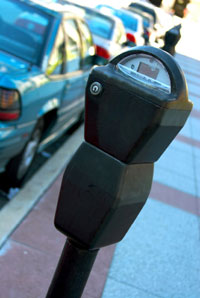
Parking seems simple enough. Many people think that there can’t possibly be a way to do this maneuver illegally or recklessly, but there is! Drivers are responsible to make sure that their vehicles do not become hazards after they have been parked. When you park your vehicle, you must be sure it is far enough away from any travel lane to avoid interfering with traffic, and it must be visible to vehicles approaching from either direction. Proper parking procedures listed below should be followed to avoid a collision with other vehicles:
- Park always in a designated area.
- On a one-way street, you can normally park on either the left or right side of the road.
- Always set the parking brake when you park. If the vehicle has an automatic transmission, leave it in park. If it is a manual transmission, leave it in gear.
- If possible, get out of the vehicle on the curbside. If you must use the street side, check the traffic before you open the door.
- Never leave your ignition keys in a parked car.
- Always lock your door if the car will be out of your sight for even a second.
- Park your vehicle as far from traffic as possible. If there is a curb, park as close to it as you can.
- When parking alongside a curb, the front and back wheels nearest the curb must be parallel within 18 inches of the curb.
- When parking on a hill, turn your vehicle’s front wheels sharply towards the curb.
Vehicles in a parking lot are often damaged by other drivers who do not leave a note of any kind. People often drive too fast or try to fit into spaces too small for their vehicles. If you do hit another vehicle while parking, remember that you MUST leave a note in a conspicuous place such as the windshield if the owner is not present, and you also must contact the police. You may be charged with a misdemeanor if you cause damage to the other vehicle without reporting it.
Following are some other things to consider when parking your vehicle.
1. No Parking Areas
There are as many areas that you cannot park in as places where you can. You should always check for signs that prohibit or limit parking. The following is a list of places where you may not park:
- In an intersection.
- On a crosswalk or sidewalk.
- In front of or blocking a driveway.
- On the left side of a two-way street.
- On a freeway (unless specifically permitted or required by a police officer), unless it is an emergency.
- At a red curb.
- On a bridge.
- In the normal traffic flow while creating a hazard to other drivers.
- With your vehicle facing against traffic.
- In front of or within 15 feet of a fire hydrant with a red curb at that location. When there is no red curb or no curb at all where the hydrant is located, you may park or stop your car there if the vehicle is attended by a licensed driver who is seated in the front seat and who can immediately move the vehicle if necessary. Local ordinances may reduce the 15 ft. distance and, of course, these restrictions do not apply to fire department vehicles.
- In designated Electric Vehicle parking spaces, of course, unless you are driving an electric vehicle. As of January 1, 2012, an electric vehicle occupying an EV-designated parking space MUST be plugged in. Violators will be towed. Additionally, the law prohibits blocking, obstructing, or otherwise barring access to an EV-designated parking space.
2. Disabled Parking
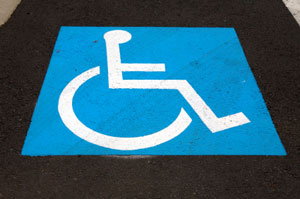
You may only use a disabled parking space if:
- Your vehicle displays a disabled person’s placard or license plates.
- A physically disabled person is in the motor vehicle when it is parked.
- A physically disabled person is being dropped off or picked up.
It is illegal to use a disabled person’s placard if that person is not in the vehicle. You can be fined $250 to $1000 and/or jailed for up to six months if convicted of using someone’s placard illegally.
3. Parking Methods
There are several parking methods, and each requires an awareness of space, steering techniques and vehicle control. Parking should be attempted cautiously, while trying not to hit or bump other cars in front or behind you. The three different parking methods include: angled, perpendicular and parallel.
a. Angled Parking
Many parking spaces are placed at an angle, making it more difficult to properly position your vehicle to safely pull into the space. Proper parking procedures listed below should be followed to avoid a collision with other vehicles:
- Signal your intention to turn.
- Leave approximately five feet from the parked cars surrounding the space.
- Pull forward until you can see down the side of the car parked before the space and then turn into the space sharply. Drive slowly (under five mph) while moving into the space.
- Straighten your wheels and pull forward until you have come up to the cement stop, parking line, or at an even line with the other parked cars.
b. Perpendicular Parking
These parking spaces are placed at a 90-degree angle to the curb. These spaces are more difficult to maneuver because it is often difficult to see the vehicles and road ahead. There is very little room to maneuver the vehicle at that great of an angle. The following steps may help to reduce any risk of collision:
- Signal your intention to turn.
- Remain approximately seven feet away from the parked cars around the space.
- When your front bumper lines up to the left side of the car just to the right of the space, begin to turn slowly (under five mph) and then sharply into the space. Make sure to check for adequate space on both sides of your car and keep aware of the proximity of your right rear fender.
- Straighten your wheels and pull forward until you have come up to the cement stop barrier or are at an even line with the other parked cars.
c. Parallel Parking
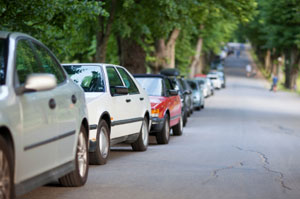
Parallel parking is usually done along the side of city or residential streets. The space should be approximately five feet longer than the length of your car. Even with a larger space than suggested, it still takes practice to become good at parallel parking. Typical parallel spaces are approximately 25 feet long. Some steps to follow include:
- Signal your intention to turn.
- Check the traffic around you and then brake until you stop parallel with the car in front of the space. Make sure to leave approximately three feet between your car and the parked cars next to you.
- Shift your car into reverse and steer sharply towards the curb or space you are entering. When the center of your car (the door post area) is even with the rear bumper of the car in front of the space, start to straighten your wheels until your front bumper is lined up with the other car’s rear bumper.
- Continue backing while turning your wheels to the left and stop before hitting your wheels to the bumper of the car behind the space.
- Drive forward slowly to center your car in the space. You may need to move your car forward and then backwards several times to correctly position in the space.
4. Parking on a Hill
How you park on a hill or grade depends on where your vehicle is faced. It will also depend on whether there is a curb you can park by or not. It is important to remember to always set your parking brake when parking, especially on a hill. Otherwise, it’d roll away! When parking, leave your vehicle in gear, or if your vehicle has an automatic transmission, use the “parking” position.
a. Downhill – When parking with your vehicle faced downhill, turn your front wheels toward the side of the road into the curb. Set your parking brake.
b. Uphill – When parking with your vehicle faced uphill, turn your front wheels away from the curb and away from the side of the road. Let your vehicle roll back slowly until the back of one front wheel gently touches the curb. Set your parking brake.
c. Sloping driveway – Turn your wheels so that the car will not roll into the street should the brakes fail. Also set your parking brake.
d. If there is NO curb, turn the wheels toward the side of the road so the car will roll away from the center of the road in case the brakes fail. Then set your parking brake.
Watch this video to review parking.
K. Bicycle and Motorcycle Safety

1. Bicycles – A bicycle can legally ride in a traffic lane on the road provided it can keep up with the flow of regular vehicular traffic. A vehicle, however, can only cross into a bicycle lane when making a right turn. A vehicle may not be driven in the bicycle lane except within the last 200 feet before the intersection where the right turn will be made. Motor vehicles may not be in a bicycle lane unless entering or leaving the highway, preparing to turn, or parking where parking is permitted. Bicycles typically ride near the right curb of the road, but may move into the lane to the left to pass other bicycles or vehicles or to avoid hitting another object. Special care and extra space needs should be observed when driving near a bicycle because they can be hard to see.
California law requires all persons under 18 to wear a properly fitted and fastened bicycle helmet while using a bicycle, non-motorized scooter or skateboard, or in-line or roller skates. This law also applies to passengers riding upon a bicycle, non-motorized scooter, or skateboard (California Vehicle Code 21212).
Safety Tips For Drivers
- Bicycles are vehicles. Riders have the same rights and responsibilities that you do as a driver.
- Yield to a bicycle that has the right-of-way.
- Slow down when encountering a bicyclist.
- Give bicyclists space, increasing the distance when you see hazards that can affect them.
- When passing, leave at least three feet between your vehicle and the bicycle. Look over your shoulder before you move back in the lane.
- Look for bicyclists when opening doors.
- Drive with extreme caution around children riding bicycles. They can be unpredictable and difficult to see.
Bicycle Lanes
A bicycle lane is a designated traffic lane for bicyclists, marked by a solid white line, typically breaking into a dotted line ending before it reaches the corner. Different from a simple white line showing the edge of the road, a bicycle lane follows specific width requirements and is clearly marked as a bike lane.
Treat a bicycle lane the same as other traffic lanes.- Do not turn into the lane if there is a bicyclist in the bike lane.
- Do not obstruct bicycle traffic by reducing the width required for safe bicycle passage, typically 3 to 4 feet.
When you are making a right turn and are within 200 feet of the corner or other driveway entrance, you must enter the bicycle lane only after ensuring there is no bicycle traffic, and then make the turn. Do not drive in the bicycle lane at any other time. You may park in a bicycle lane if your vehicle does not block a bicyclist and/or there is not a “No Parking” sign posted. Drivers of motorized bicycles should use bicycle lanes carefully to avoid collisions with bicyclists.
Safety Tips For Bicyclists
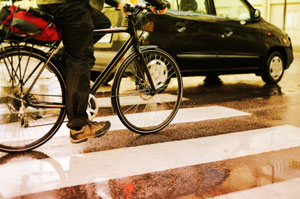
- Learn and obey all the same rules of the road you would practice if driving a motor vehicle.
- Be alert, and always look out for obstacles and vehicles.
- Whenever possible, avoid riding a bike at night.
- Be aware of your position on the road as well as traffic around you.
- Always check your brakes before riding, and keep your bicycle in proper working order.
- Bike with the flow of traffic, not against it.
- Always protect your head by wearing a helmet.
- Have a presence on the road — ensure that you are seen by other drivers.
Important safety statistics for Bicyclists
- In 2014, nationwide 726 pedalcyclists were killed and 50,000 were injured in motor vehicle traffic crashes.
- 2.2% of all motor vehicle fatalities in 2014 were pedalcylist deaths.
- 71% of pedalcyclist fatalities occurred in urban areas and 29% happened in rural areas.
- Male pedalcyclists made up the majority of those killed (88%) or injured (82%) in 2014.
- The average age of pedalcylsits killed has increased since 2005 to 2014 from 39 to 45.
- Alcohol consumption, for either the cyclist or driver, was reported in 35% of all pedalcyclist fatalities in 2014. 8
- In California in 2013, 164 bicyclists were killed and 13,283 were injured. There has been a steady increase since 2009 with 107 deaths and 12,043 injured.
- The highest percentage of bicyclists injured in 2013 in California were between the age of 15 to 24 and the highest percentage of those killed were 45 to 54. 9
2. Motorcycles – Motorcycles are involved in a high number of traffic collisions due in large part to their “invisibility” on the road. A vehicle’s side mirrors are important tools that enable a motorist to see motorcycles and reduce the number of these collisions. Motorcycles must obey the same driving laws as all other vehicles. Motorcycle training classes are available through the California Highway Patrol.
a. By law, a motorcyclist must wear a helmet or protective headgear while riding on public highways, and it is recommended they wear boots and gloves as well.
b. REMEMBER…Motorcycles must be given extra attention while on the road because they can be hard to see. Extra room must be left for the motorcycle when the rider is making turns, and allowances should be given for any lane changing, positioning, and increases in speed.
c. Important Motorcycle Statistics:
- In 2013, there were 4,668 motorcyclists killed and 88,000 injured in motor vehicle traffic crashes nationally. This accounted for 14% of all traffic fatalities.
- Motorcycle riders involved in fatal traffic crashes were more likely than passenger vehicle drivers to have previous license suspension or revocations.
- The average age of a motorcyclist killed in 2013 was 42 and those 40 years and older made up 55% of all motorcyclists killed.
- 22% of the motorcycles involved in fatal crashes collided with fixed objects, compared to 18 percent for passenger cars, 14 percent for light trucks, and 4 percent for large trucks.
- 34% of all motorcycle riders involved in fatal crashes were speeding, compared to 21% for passenger car drivers, 18% for light-truck drivers, and 8% for large-truck drivers.
- In 2013, the majority of motorcyclist were killed during the weekdays.
- 28% of the motorcyclists killed had a BAC of .08 or higher (legal limit) which was higher than any other type of motor vehicle driver. 10
- In California, there were 463 motorcyclist fatalities and 11,946 injuries in 2013.
- Motorcyclists between the age of 25 to 34 had the highest injury and mortality rate in California in 2013 and the majority of collisions were caused by unsafe speeds. 11
- In 2013, California ranked 3rd, behind Florida (467) and Texas (457), for the state with the highest number of traffic fatalities. 12

d. The Hurt Report
A study conducted by Harry Hurt in 1981, often referred to as the Hurt Report and still considered one of the best sources for detailed motorcycle crash data, at the University of Southern California found the following: 13
- Approximately three-fourths of the motorcycle crashes studied involved a collision with another vehicle.
- Approximately one-fourth of the motorcycle collisions studied involved a collision with the roadway or a fixed object in the environment.
- 2 percent of the crashes studied involved some sort of roadway defect (potholes, cracks, pavement ridges, etc.).
- 1 percent of the collisions studied involved an animal.
- In two-thirds of the collisions that involved another vehicle, the driver of the other vehicle was at fault by violating the motorcycle’s right of way.
- Weather conditions were only a factor in about two percent of the motorcycle crashes.
- 92 percent of the motorcycle accidents studied involved motorcycle riders who were self-taught or learned from family or friends.
- Injury severity increases with speed, alcohol involvement, and motorcycle size.
- In the motorcycle accidents studied, less than 10 percent of the riders had insurance to cover medical care or to replace property. 14
e. The use of a safety helmet while riding a motorcycle has proven to greatly reduce your risk of serious injury when involved in a crash.
f. The National Highway Traffic Safety Administration suggests the following safe driving tips that can be used to safely share the road with motorcyclists:
- Respect the motorcyclist — Remember, motorcycles are vehicles with all the privileges of any other vehicle on the road. Give the motorcyclist a full lane of travel.
- Look out — Watch for motorcycles on the highway, at intersections, and when they make left turns or lane changes.
- Anticipate a motorcyclist’s maneuver — Obstructions that you may ignore, such as debris or potholes, can be deadly for a motorcyclist. Anticipate evasive actions taken by motorcyclists.
- Allow plenty of space — Don’t follow a motorcycle too closely. Allow enough room for the motorcyclist to take evasive actions.
g. The following are tips from the NHTSA for the motorcyclist:
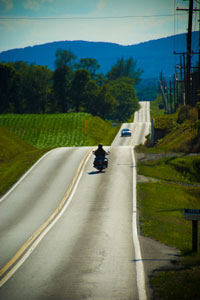
- Wear protective clothing — The most important factor in reducing injury is personal protection. Leather jackets, gloves, long pants, proper footwear, eye protection, and helmets provide this personal protection.
- Ride where you can be seen — Make sure that you can be seen by drivers around you. Never ride in another driver’s blind spot.
- Drive defensively — Always watch out for others around you.
- Leave a buffer zone — Give yourself extra space in your lane for emergency braking situations or other avoidance maneuvers.
- Single lanes — Never share a lane with a car. While it is not illegal to share or split a lane with a car, it is unsafe to do so. A driver may not expect you to be there and may not be aware of your presence. Most drivers are looking for vehicles, not motorcycles.
- Use signals — Always clearly signal your intentions to other drivers. Signal before changing lanes and make your lane move gradually,
- Maintain your motorcycle — Make sure your motorcycle is in good condition. Have your motorcycle inspected to ensure it is in good mechanical condition.
- Light-colored clothing — Wear fluorescent or light colors during the day and reflective materials in the evening and at night. Remember, See and Be Seen!
Take special care when passing. Ride in the left-hand portion of your lane at a safe following distance in order to increase your line of sight and make you more visible. Be sure to check for oncoming traffic and signal your intention. Use your mirror, turn your head to look at the traffic behind you. When it’s safe to do so, move into the left lane and accelerate. Don’t crowd the vehicle you are passing and provide space so that hazards in your lane can be avoided. Ride through the driver’s blind spot as quickly as it is safe to do so. Signal again and check your mirror and turn your head again before returning to your original lane. And, of course, passing must be completed within the speed limit and only where it is not forbidden.
The California Driver Handbook recommends that you follow these rules to respect the right-of-way and safely share the road with motorcyclists:
- When you change lanes or enter a major thoroughfare, make a visual check for motorcycles. Also use your mirrors. Motorcycles are small and can easily disappear into a vehicle’s blind spots.
- Allow a four-second following distance. You will need this space to avoid hitting the motorcyclist, if he or she brakes suddenly or falls off the motorcycle. Motorcycles generally can stop faster than passenger vehicles.
- Allow the motorcycle a full lane width. Although it is not illegal to share lanes with motorcycles, it is unsafe.
- Never try to pass a motorcycle in the same lane you are sharing with the motorcycle.
- When you make a turn, check for motorcyclists and gauge their speed before turning.
- Look carefully for motorcyclists before opening doors next to moving traffic or before turning right.
- Motorcycles may travel faster than traffic (and thus pass) during congested road conditions and can legally travel in the unused space between two lines of moving or stationary vehicles; this is commonly called “lane splitting.” Lane splitting can be dangerous for several reasons. First, the motorcycle will be closer than normal to any car with which it splits a lane and thus must be especially watchful for movements such as lane changes in the direction of the motorcycle. Secondly, the motorcycle must be careful of riding in a car’s blind spots when lane splitting since rearview mirrors will be set so that vehicles in other lanes can be observed. All motorists in congested traffic, as well motorcyclists who are passing slow cars in that traffic, must be careful when pulling out to change lanes. Those cars will be initiating their lane changes at very slow speeds compared to the rate at which the motorcycle may be traveling.
- Remember that road conditions, which are minor annoyances to you when driving your car, pose major hazards to motorcyclists. Potholes, gravel, wet or slippery surfaces, pavement seams, railroad crossings, and grooved pavement can cause motorcyclists to change speed or direction suddenly. If you are aware of the effect of these conditions and drive with care and attention, you can help reduce motorcyclist injuries and fatalities.
Always remember that you are sharing the road with others when you get behind the wheel, and that you can communicate your intentions with them. View this video for more information on sharing the road with motorcycles and bicycles.
The following video emphasizes the importance of safe driving habits.
1 National Highway Traffic Safety Administration (NHTSA). (2016). 2014 Traffic Safety Fact Sheet – Young Drivers. DOT HS 812 278. Retrieved from: https://crashstats.nhtsa.dot.gov/Api/Public/ViewPublication/812278
2 Blincoe, L. J., Miller, T. R., Zaloshnja, E., & Lawrence, B. A. (2015). The Economic and Societal Impact Of Motor Vehicle Crashes, 2010 (Revised). DOT HS 812 013. National Highway Traffic Safety Administration. Retrieved from https://crashstats.nhtsa.dot.gov/Api/Public/ViewPublication/812013
3 National Highway Traffic Safety Administration (NHTSA). (2016). 2014 Traffic Safety Facts – Speeding. DOT HS 812 265. Retrieved from https://crashstats.nhtsa.dot.gov/Api/Public/ViewPublication/812265
4 Blincoe, L. J., Miller, T. R., Zaloshnja, E., & Lawrence, B. A. (2015). The Economic and Societal Impact Of Motor Vehicle Crashes, 2010 (Revised). DOT HS 812 013. National Highway Traffic Safety Administration. Retrieved from https://crashstats.nhtsa.dot.gov/Api/Public/ViewPublication/812013
5 National Highway Traffic Safety Administration (NHTSA). (2016). 2014 Traffic Safety Facts – Speeding. DOT HS 812 265. Retrieved from https://crashstats.nhtsa.dot.gov/Api/Public/ViewPublication/812265
6 National Highway Traffic Safety Administration (NHTSA). (2016). 2013 Traffic Safety Facts – Rural/Urban Comparison. DOT HS 812 181. Retrieved from https://crashstats.nhtsa.dot.gov/Api/Public/ViewPublication/812181
7 Feigenbaum, Baruch. (2015) Increasing Mobility in Southern California: A New Approach. Reason Foundation. Retrieved from http://reason.org/files/southern_california_mobility_plan.pdf
8 National Highway Traffic Safety Administration (NHTSA). (2016). 2014 Traffic Safety Facts – Bicyclists and Other Cyclists. DOT HS 812 282. Retrieved from https://crashstats.nhtsa.dot.gov/Api/Public/ViewPublication/812282
9 The California Highway Patrol. (2013). 2013 Annual Report of Fatal and Injury Motor Vehicle Traffic Collisions. Retrieved from https://www.chp.ca.gov/InformationManagementDivisionSite/Documents/2013-sec7.pdf
10 National Highway Traffic Safety Administration (NHTSA). (2015). 2013 Traffic Safety Facts – Motorcycles. DOT HS 812 148. Retrieved from https://crashstats.nhtsa.dot.gov/Api/Public/ViewPublication/812148
11 The California Highway Patrol. (2013). 2013 Annual Report of Fatal and Injury Motor Vehicle Traffic Collisions. Retrieved from https://www.chp.ca.gov/InformationManagementDivisionSite/Documents/2013-sec7.pdf
12 National Highway Traffic Safety Administration (NHTSA). (2015). 2013 Traffic Safety Facts – Motorcycles. DOT HS 812 148. Retrieved from https://crashstats.nhtsa.dot.gov/Api/Public/ViewPublication/812148
13 National Highway Traffic Safety Administration (NHTSA).Research in Motorcycle Crashes. Retrieved from http://www.nhtsa.gov/people/injury/pedbimot/motorcycle/00-NHT-212-motorcycle/research9-11.html
14 Hurt, H.H., Ouellet, J.V., and Thom, D. R. (1981). Motorcycle Accident Cause Factors and Identification of Countermeasures. Traffic Safety Center, University of Southern California, Los Angeles, CA. DOT HS-5-01160. Retrieved from http://isddc.dot.gov/OLPFiles/NHTSA/013695.pdf



